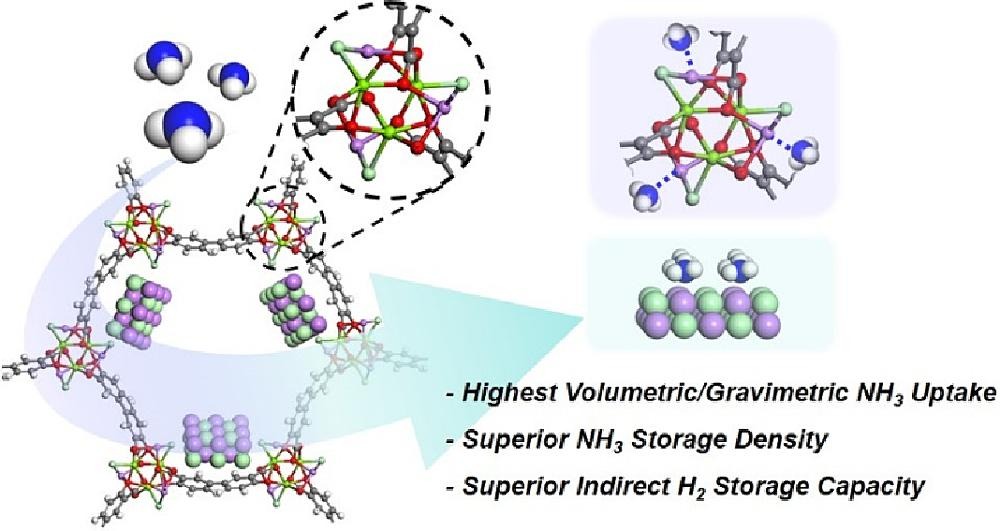High ammonia storage capacity in LiCl nanoparticle-embedded metal-organic framework composites
-
Authors :
Hyojin Kim, Jong Hyeak Choe, Hongryeol Yun, Jintu Francis Kurisigal, Sumin Yu, Yong Hoon Lee, Jung-Hoon Lee , and Chang Seop Hong
-
Journal :
Chemical Engineering Journal
-
Vol :
489
-
Page :
151319
-
Year :
2024

Abstract
Although porous adsorbents show potential for NH3 capture and storage, practical issues such as stability and limited gravimetric/volumetric capacity persist. Lithium chloride (LiCl), which possesses the highest theoretical NH3 capacity among metal halides, faces challenges such as a significantly high plateau pressure and inevitable volume expansion in the LiCl(NH3)4 complex, hindering static NH3 storage. Herein, we introduce a series of M2(dobpdc)-based composites, specifically LiCl@Mg2(dobpdc)-5, showcasing the highest gravimetric/volumetric NH3 adsorption capacity (48.3 mmol g−1/65.8 mmol cm−3) and superior NH3 storage density (1.12 g cm−3) at 298 K and 1 bar. Notably, the indirect gravimetric hydrogen storage capacity was calculated to be 14.6 wt%, which is comparable to the hydrogen storage capacity of NH3 itself (17.8 wt%). This remarkable performance stems from the presence of LiCl in the metal nodes, highly dispersed LiCl nanoparticles (NPs), and open metal sites. Additionally, the composite avoids volume expansion even after LiCl(NH3)4 formation at 273 K. Thorough analysis using van der Waals-corrected density functional theory calculations confirmed the efficacy of the LiCl impregnation method, suggesting its potential to advance NH3 storage systems for hydrogen carriers.
















